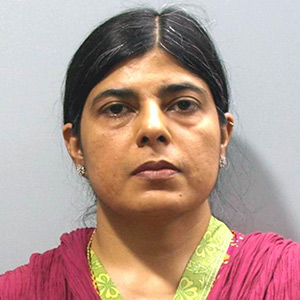Introduction
Calligraphy is an ancient art. Every era in history developed its own script and highlighted its beauty. The Sumerians, who were the most civilized of the ancient world, gave calligraphers a high status, and the pen the status of a deity. This status was maintained through the centuries with the development of new scripts. Calligraphy was important not only for its functional usage in manuscripts, coins and embellishment for buildings, but also for its value as the highest form of art. In Islam, Quranic Calligraphy has the status of a sacred art.
Calligraphy as an art form is employed in architecture and miniature painting it also lends itself to all mediums and materials and can be done on paper, canvas, wood, stone etc. It is found on the Taj Mahal at Agra, in the Mosque of Cordoba, Spain, the Mosque of Wazir Khan in Lahore, and hundreds of buildings all over the Muslim world and the Indian Subcontinent.
The old Masters of Calligraphy include the Caliph Ali (RA), Abu'I Saud Dehlavi, lbn e Maqla, lbn al Bawab, Yaqut Mustasmi etc as well as later Ustads like Mir lmad ul Hassan, Mir Ali Tabrizi, Abdul Majid Parveen Raqam and Hafiz Muhammad Yusuf Sadidi who made great innovations in the art. Calligraphy has also inspired modern artists to employ it in their art.
With the advent of new technologies Calligraphy is in danger of dying out as calligraphers have lost the means of their livelihood, in newspapers and advertising companies. In addition the beauty and grace of different scripts that were devised on aesthetic principles of proportion is being replaced by computer generated approximations of the rules.
Aims & Objectives
The one year professional diploma in Calligraphy aims to promote and revive an endangered art form through a formal teaching programme. The programme will enable students to develop an understanding of South Asian, Middle Eastern and Islamic Calligraphy in terms of its concepts, history, evolution, aesthetic origins, and structure and technique. The aim is to stimulate an intelligent, critical and dynamic awareness of the philosophy and techniques of classical Calligraphy as well as its practice in the contemporary context.
The main objective of the programme is to rediscover and recreate the link between a meaningful theory and practice of Calligraphy. The programme also aims to produce Calligraphers for the future, whose practice is based on critical understanding and rigorous training,with the purpose of engendering a rediscovery of this highly acknowledged art form, and shaping and developing the cultural sensibilities of the people in the twenty first century.
Learning Outcome
Calligraphy as an art forrn has maintained its value in the present day. However there is no academic programme dedicated to Calligraphy. The NCA is the only institution that offers this opportunity. Students who fulfill all the requirements of the programme would gain a critical understanding of the principles and rules of classical Calligraphy, thereby enhancing their practice in any field of their choice, in painting, miniature and fresco, sculpture and architecture etc.
This programme will equip the students with the knowledge of the history and the principles of classical Calligraphy along with its practice in the several scripts invented over the centuries. This will enable the students to execute projects in Calligraphy based on its correct rules and principles, and with this knowledge be able to innovate in a creative manner, which is essential for the development of the art of Calligraphy in the 21st century.



